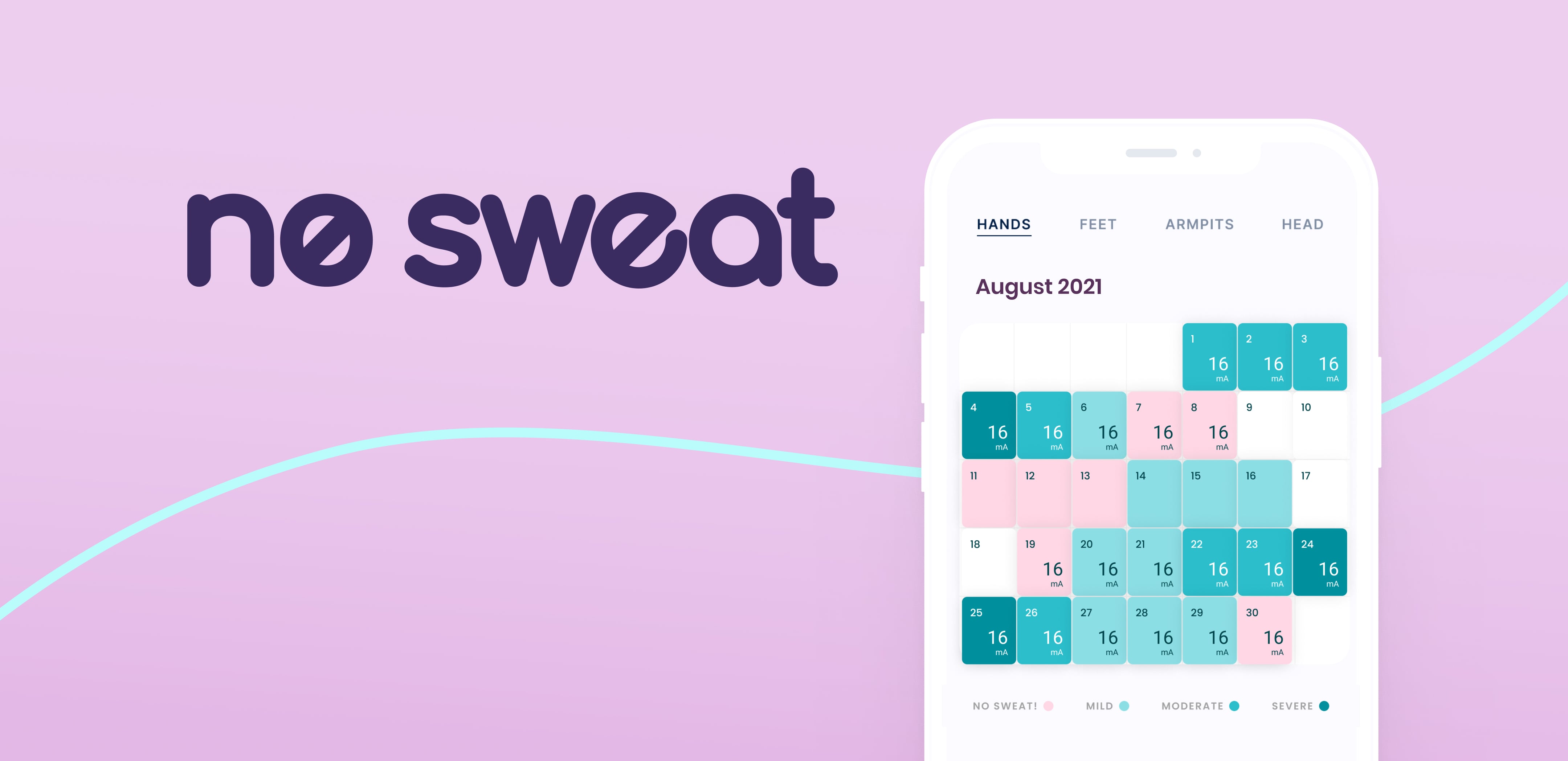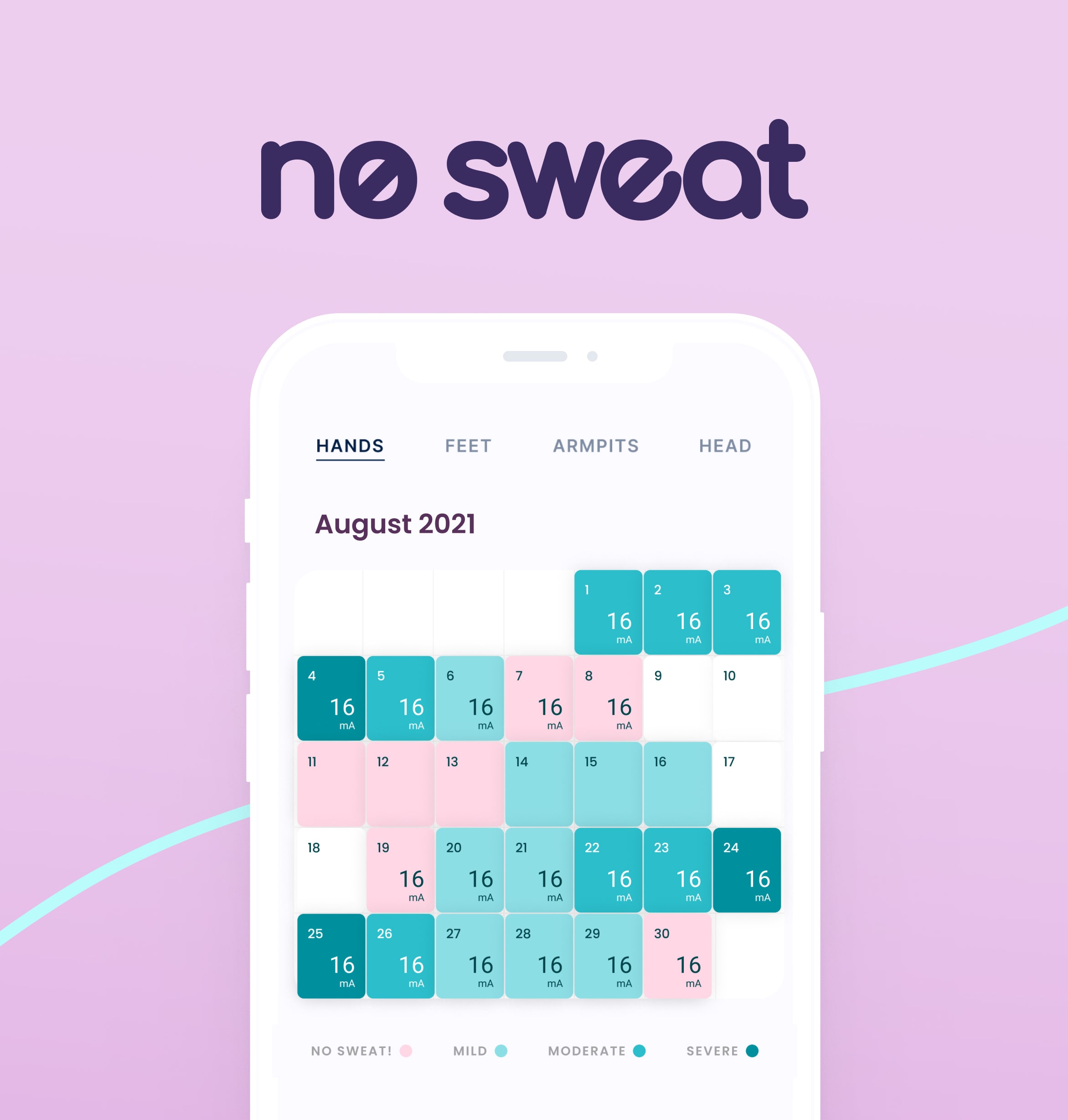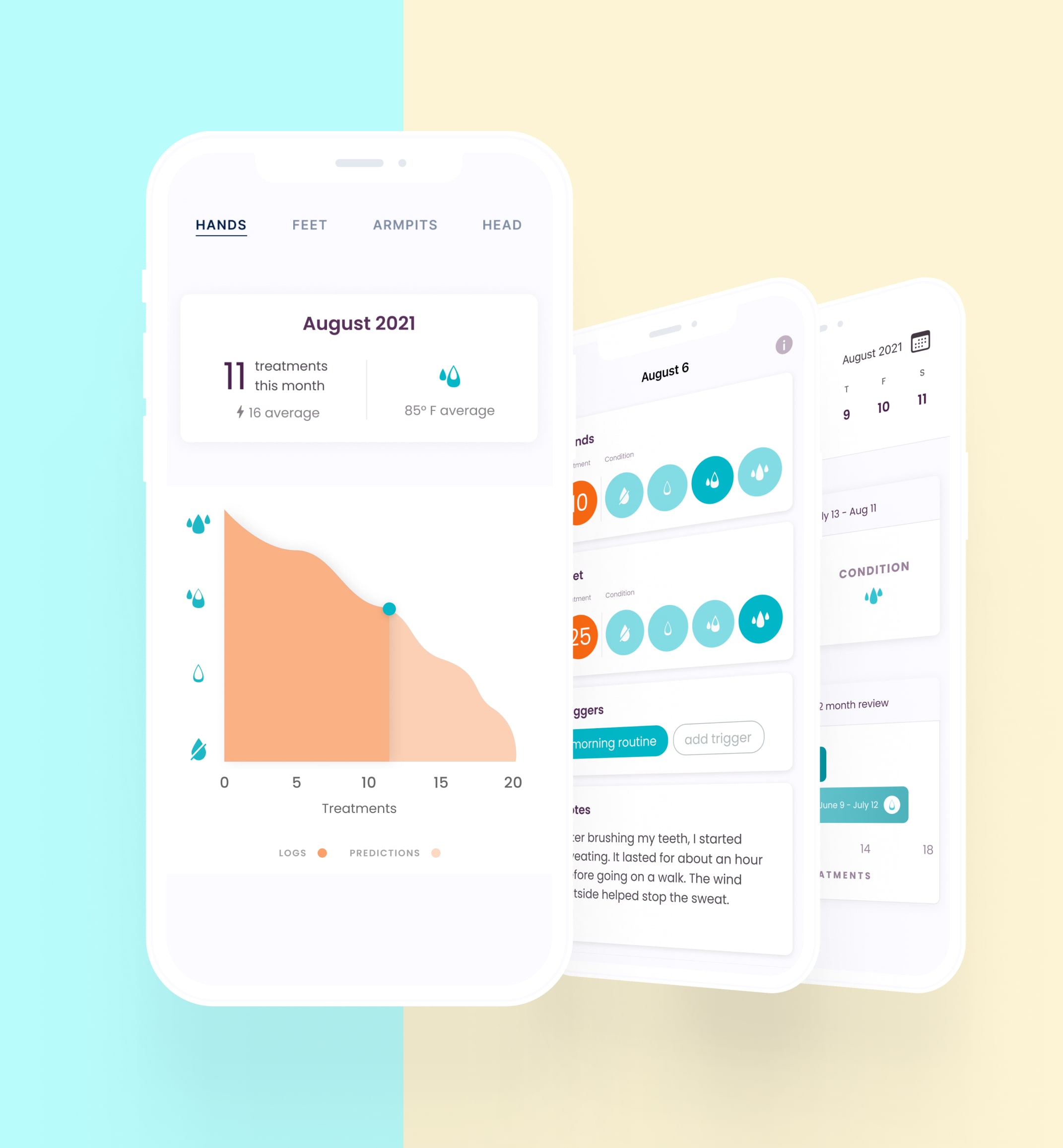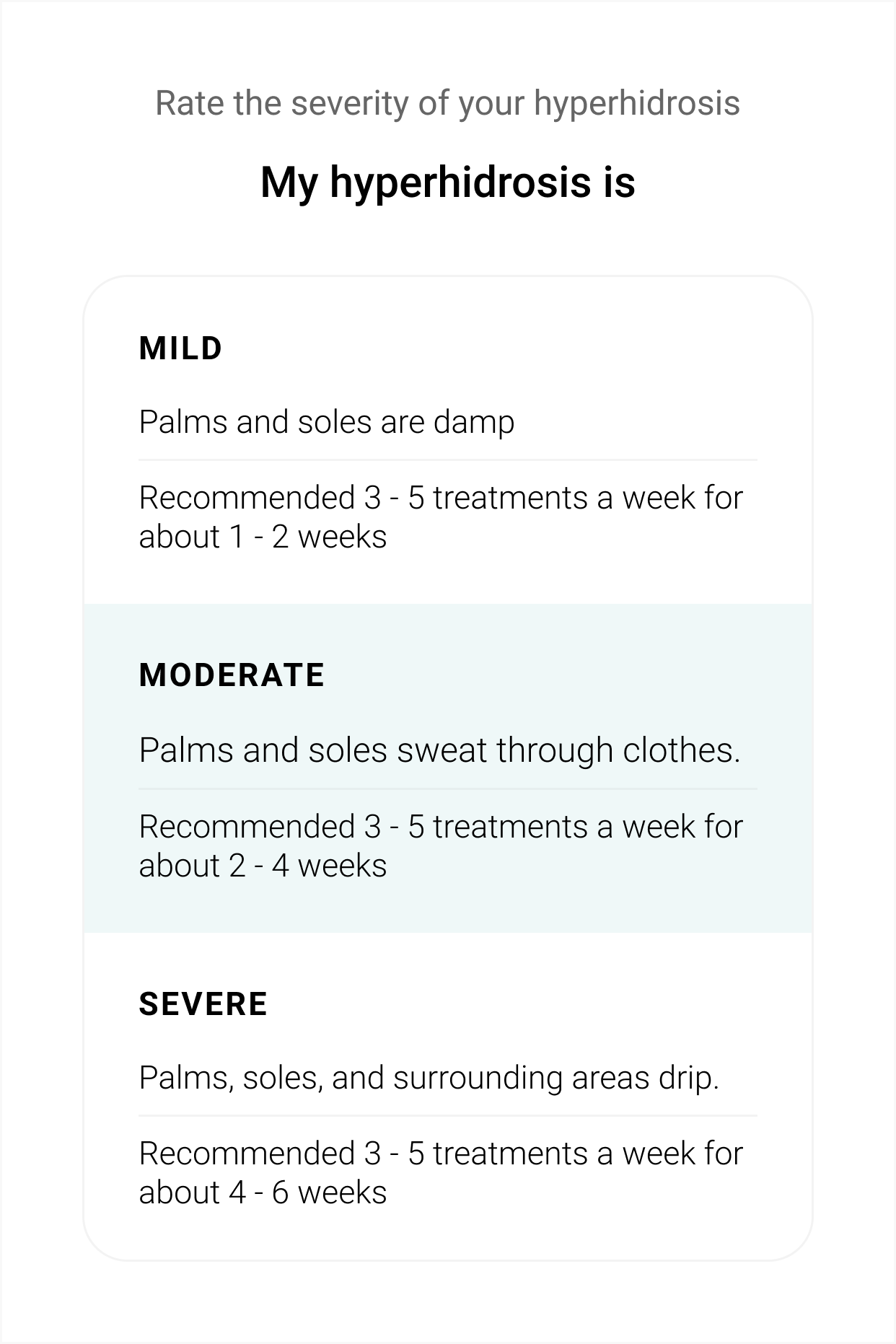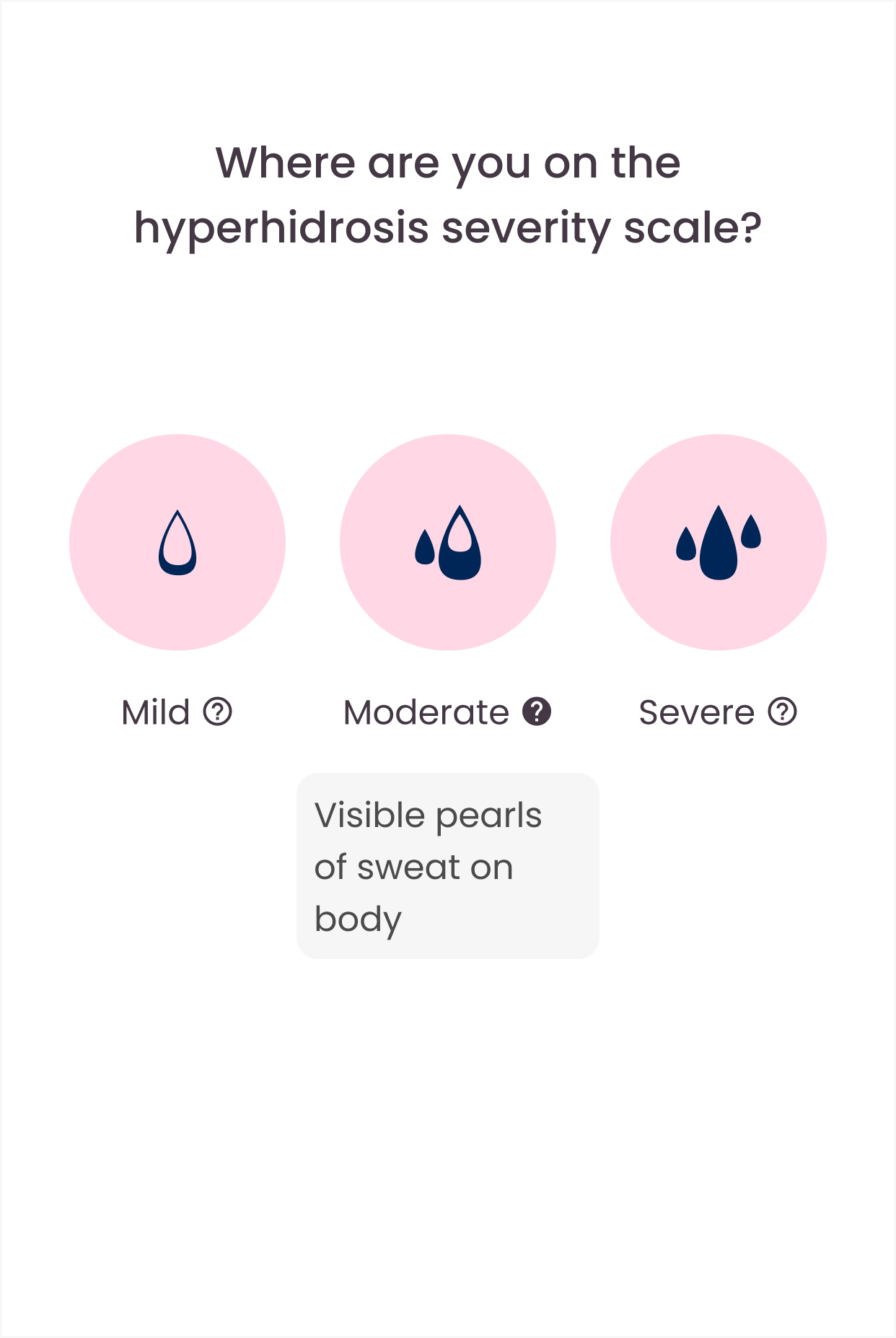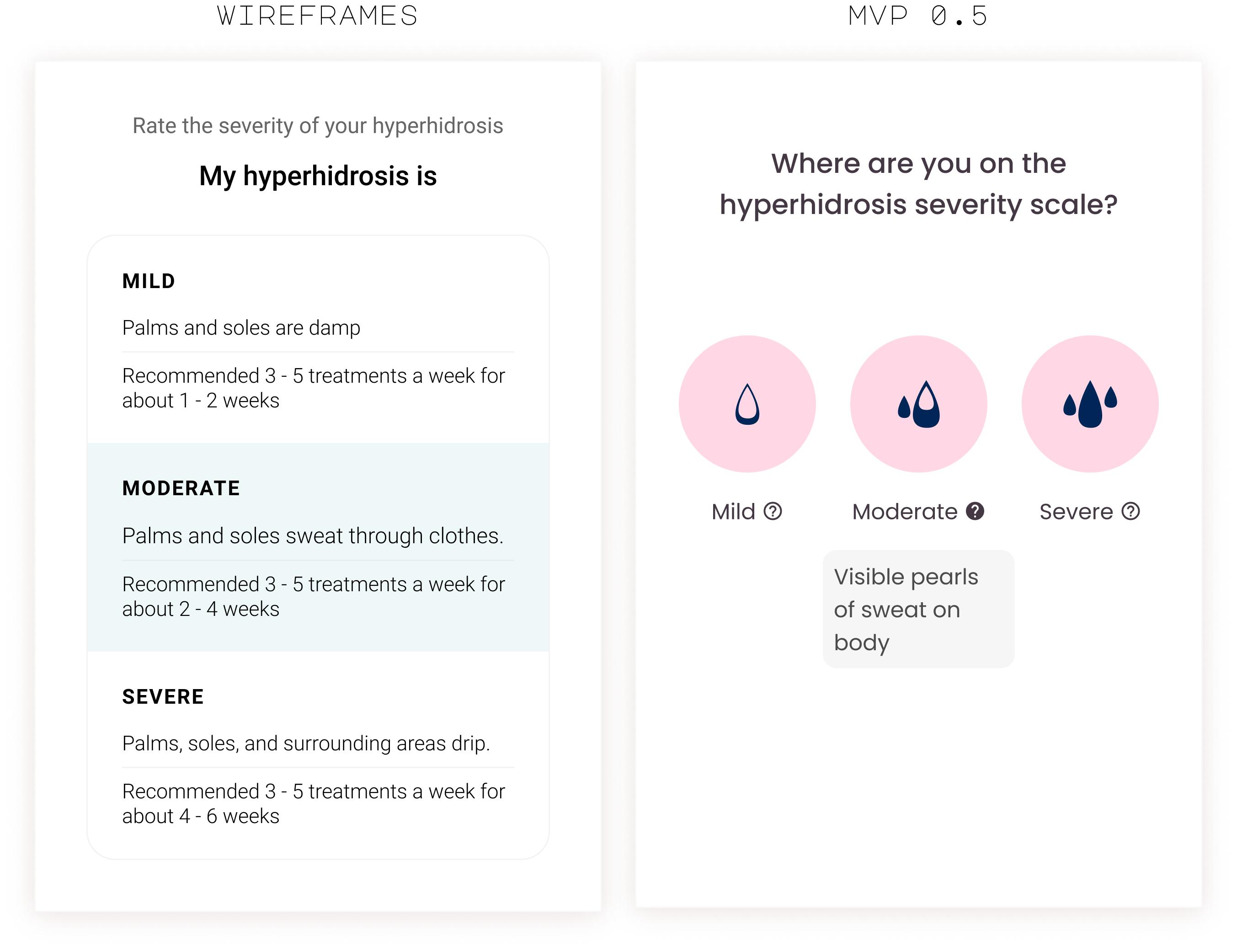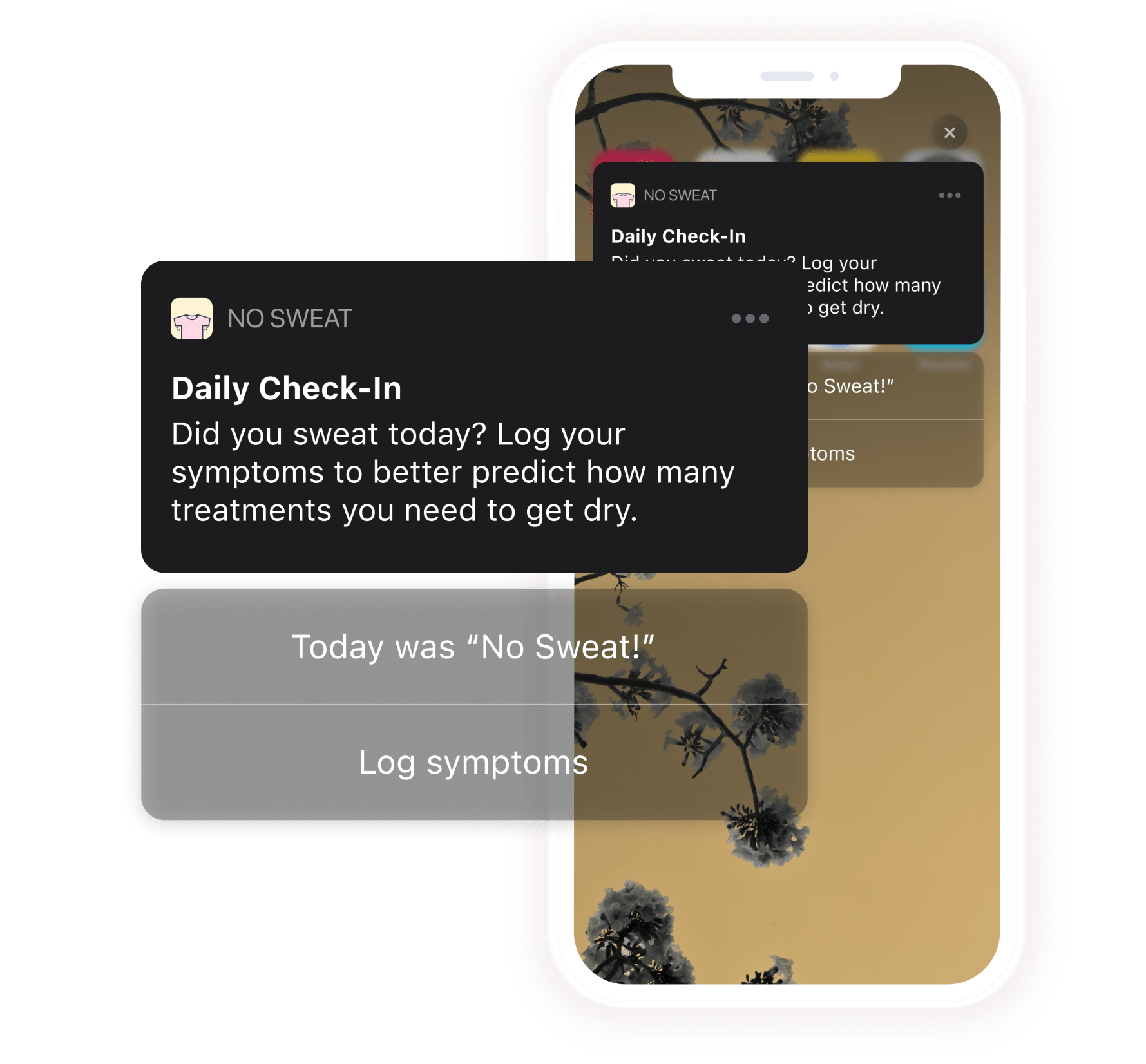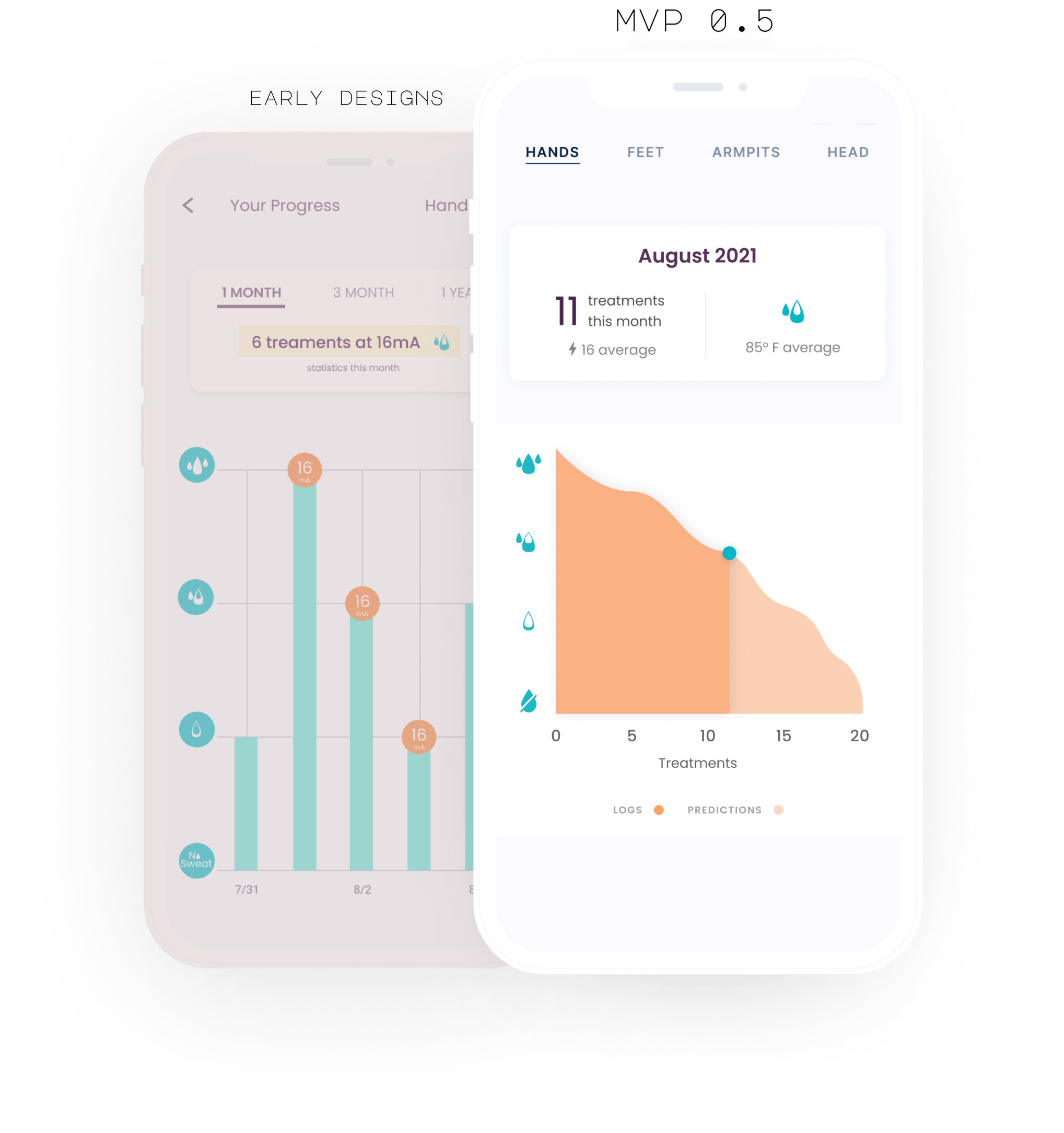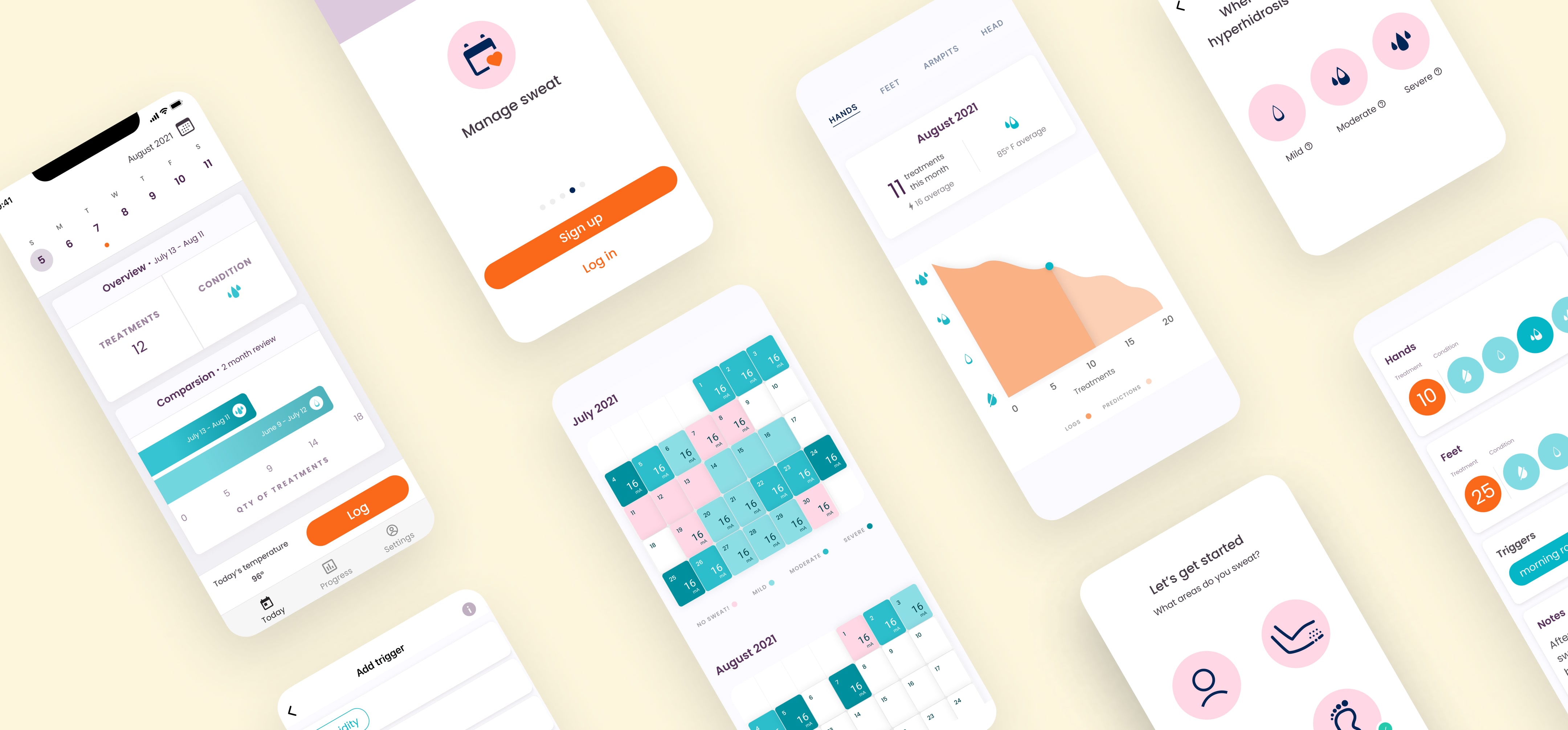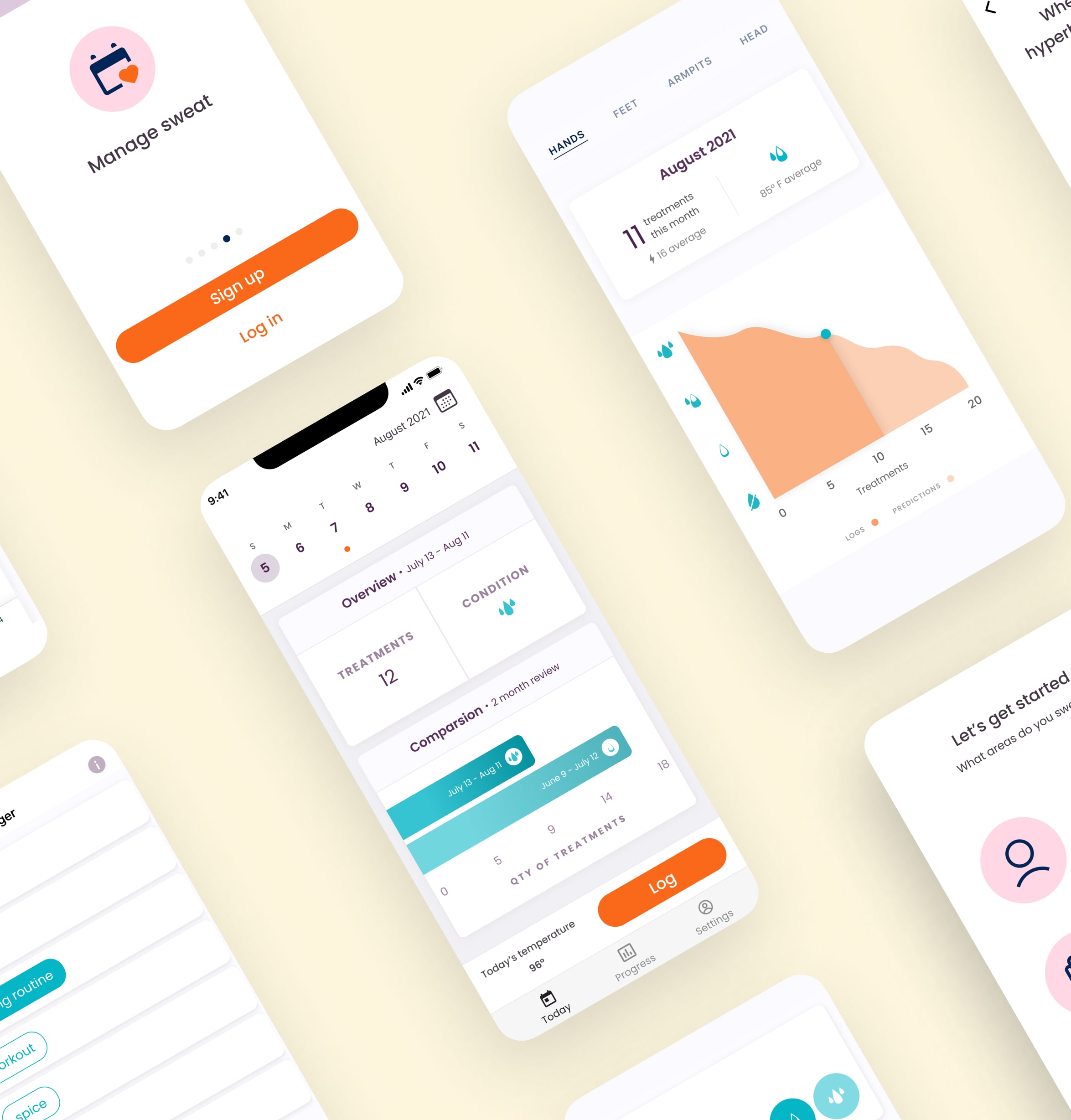Tracking Habits
Initially, I designed with the assumption that those with hyperhidrosis want to log every day to provide data for the algorithm. That means opening the app regardless of whether they sweated or not.
I learned through no-code testing that they want to spend as little time as possible getting dry. After all, iontophoresis already takes about 30 mins per area.
That’s why No Sweat sends a reminder where they can easily select that they didn’t sweat.
